Waist high raised beds?
I've had one foot high raised beds now for several years and they are working pretty well, but now I want to build some new beds. I'm thinking about making them at least 30" high, perhaps a bit more. It has been a constant struggle keeping the three dogs and various rabbits out of my garden, not to mention the &%$@!& Bermuda grass that manages to grow up through a foot of soil. This spring I fenced in a corner of my back yard with black coated chain link fencing (quite securely or so I thought). But the rabbits got in there somehow and the dogs have managed to break in a few times as well, mostly by crawling under or sneaking in when the gate doesn't latch properly.
I have a small suburban backyard and need to find a way for my garden to coexist with the rabbits and the dogs because it just isn't feasible to divide it up. So, I was thinking, if I just built the beds high enough that the rabbits and dogs couldn't get in, they could play around between them and I wouldn't need a fence at all. Plus it would sure help my back. I was thinking of getting a large amount of plain cardboard, bags of leaves, even branches to fill up the first couple of feet, then put the good soil on top.
Has anyone tried this? Thoughts - pro or con?
Comments (26)
okievegan
10 years agolast modified: 9 years agoDon't forget the mature height of whatever you intend to plant or you might need a ladder to harvest and do bug inspections.
slowpoke_gardener
10 years agolast modified: 9 years agoI would not be able to make a bed that tall work. I like my beds to be just tall enough to drain well. Mine are all boarder less beds. I also have a supply of electric fence chargers, live traps, steel traps and .22 shells.
Shelley Smith
Original Author10 years agolast modified: 9 years agoThank you both for the feedback. I can see this working well for shorter crops, like lettuce, but I'm not sure how to make it work for tomatoes and other tall stuff.
Does anybody know if its feasible to prune tomatoes to say a 3 foot height? Would they get bushier and produce their fruit lower, or would you just hurt production I wonder?
slowpoke_gardener
10 years agolast modified: 9 years agoIf I were trying to grow tomatoes low I would try to run then along a wire or trellis, much like a grape vine. I have never tried that because I have no problem with them growing up to 7 feet tall. I think pruning might reduce production because you might be removing fruit producing areas from the plant.
soonergrandmom
10 years agolast modified: 9 years agoIf I were going to make a bed that tall, I would try to fine someone with firewood that got too old to use and I would fill the bottom of the bed with that, for a couple of feet if possible. Then I would put the good stuff on top. The wood will hold moisture and provide nutrient as it breaks down. It will be much slower to break down than the other stuff. That is a pretty tall bed though.
chickencoupe
10 years agolast modified: 9 years agoI've done what soonergrandmom is suggesting but on a smaller scale and it is the best bed I have.
I've seen raised beds around this height for physically challenged. They made two beds about 4' apart, if I remember correctly and then constructed a frame... sort of like a cow panel that arched across both. There, they were growing pole beans, I think it was and some type of gourd. They still required a step stool to reach the arch and tend to the vines at the highest point.
In that case, the gardener could not stoop or bend over and it worked well for them.
I don't have experience to know what plants would work, but wanted to add what I've seen (online).
bon
Okiedawn OK Zone 7
10 years agolast modified: 9 years agoCanokie, Rabbits can get through very tiny holes in fencing. We have lined the bottom two feet of all our garden fences with 1" chicken wire, and I still worry about baby bunnies squeezing in through those 1" openings. It seems like they can squeeze in through the tiniest of openings when they are hungry. Even adult rabbits can squeeze through standard chain link fencing that you think would exclude them.
My highest raised beds are only a foot above grade level and the issue with beds that high is that the soil heats up a great deal in the summer since all 4 sides of the beds are elevated and have sunlight shining on them all day, and the soil also dries out really fast. With beds three feet high, I think you'd have to build them hugelkulture-style, as Carol and Bonnie suggested, using whatever wood you can find as the bottom layers. The wood, especially as it ages and starts breaking down over the years, will soak up water and hold it like a sponge. The downside to having beds like that with a high wood and/or cardboard/newspaper content is that the roly-poly bugs (pill bugs and sow bugs) will flock to those beds because they eat the soft wood and help it break down. While their help as decomposers is useful, they also will eat plants and fruit, including tomatoes, whenever they please. Because I have used a lot of wood (usually partially-decayed wood like old tree trunks or tree limbs from our woodland) to improve our dense clay soil, I have had a lot of issues in raised beds with the pill bugs and sow bugs. I just use Slug-Go Plus nowadays during the growing season and that keeps their population down.
The trick with really tall beds is that you have to build them so they drain well enough during periods of extremely heavy rainfall but also so they hold moisture well during very dry weather. When you build a bed that is 30" tall above ground, you're essentially growing in containers, albeit bottomless containers.
With tomato plants, you can keep them any size you chose by pruning, but you'll reduce their ability to produce as large of a harvest simply because you're reducing the amount of leaf surface by keeping the plants pruned down shorter. Since the leaves are the photosynthesis factor that provide the energy for the fruit to grow, you'll get a lower harvest from a 3' plant that's been pruned to stay small than you'd get from a 6-8' tall plant that's been allowed to grow to its regular height without extensive pruning.
There are many determinate varieties that stay smaller naturally, so if I was wanting to limit the size of my plants, instead of planting and heavily pruning indeterminate varieties, I'd be inclined to simply choose determinate varieties. There are determinate varieties that only get a foot or so tall, and there are some tall determinates that still manage to get 4-5' tall in a good summer with plentiful rainfall.
With the heavier watering required for very tall raised beds, you'll also have to watch carefully and perhaps fertilize more often to keep your plants producing well because the heavier watering can leach out the nutrients in the soil.
Dawn
farmgardener
10 years agolast modified: 9 years agoCanokie, 4 years ago I had an accident and spent some time in a wheelchair and walker - so my husband made several raised beds for me, plus large containers like old stock tanks, etc. My raised beds are made of brick - they are 4x12 and 24" tall. A better width would be 3' instead of 4 in order to reach across from either side (I am short and my arms are too!) I solved the rabbit problem by putting a t-post or heavy stake on each corner and in the center of the 12' side...then put a cattle panel on the back of each bed and purchased an inexpensive plastic fencing at Lowe's or Home Depot and ran around the top of the bricks. Make sure to anchor it at the bottom or the bunnies will slip under the fence. I run pole beans, tomatoes, and cucumbers on the cattle panel and put green beans, squash, lettuce, onions, etc in the front. Leave the netting loose enough on the front and sides that you can push it down to reach over then pull it back up - I can reach thru the cattle panel on the back to harvest. This simple fence deters rabbits, dogs, and even most of the chickens. As others have mentioned - raised beds have to be "thought out" because they dry out a lot quicker. Add lots of organic matter and still allow good drainage. Sorry this is such a long post.
helenh
10 years agolast modified: 9 years agoIf you have back trouble I think you should make some containers that will allow you to garden. There was a woman on the Ozark forum who had some made up on legs and they were on her deck. These screwed together and could be disassembled. I looked and could not find the pictures. Too much drainage will be a problem if you just make a tall bed I'm afraid and Bermuda can climb. As far as dogs, maybe you have good dogs. I did not lift him for this
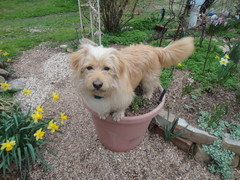
This post was edited by helenh on Tue, Nov 5, 13 at 20:02
Shelley Smith
Original Author10 years agolast modified: 9 years agoHelen, your picture made me laugh! No, my dogs are anything but good dogs! Sammie likes to hop up on the kitchen table like a cat. They get into everything and love nothing better than digging in the soft garden dirt. Drives me crazy!
Thank you all for your feedback. You all have given me some things to think about that I hadn't considered. I'm sure this works in some climates, but it probably wouldn't be a good bet in ours. I'll try to come up with a different solution to this problem.
Thanks again!
Shelley
helenh
10 years agolast modified: 9 years agoPerennial for sure. Sometimes he is a houseplant. He has aged a little and is better behaved now. A 30 inch tall raised bed would make a wonderful dog fort and vantage point for watching the rabbits.
Okiedawn OK Zone 7
10 years agolast modified: 9 years agoHelen, That photo of your dog made me laugh at loud! He is such a cutie. Our dogs all are very large dogs and are plant destroyers, but they've never jumped up into the containers.
Shelley, Do you know if the rabbits actually live in your yard, or if they are coming from a nearby field or something? I know that your garden is set up as a potager and that most of the fencing that would keep rabbits out would not necessarily be aesthetically pleasing because it would ruin the look of your garden. Also, have you tried sprinkling blood meal along the fenceline to repel the rabbits? Some people have success repelling rabbits with blood meal and others don't. It might hinge on just how hungry the rabbits are.
The best way I have found to keep the rabbits from eating ornamental plants they shouldn't is to put little piles of henscratch along the side of the driveway for them to nibble on. That helps keep the ornamental plants in our unfenced yard from being devoured. The rabbits are creatures of habit and come to eat at the same place at the same time every day. The coyotes know this and they come here looking for rabbits too. I enjoy seeing the bunnies hopping around in the yard every day, but that's because the edibles are fenced, and the ornamentals are safe as long as I put out henscratch. Before I got around to lining the larger garden fence with chicken wire with small holes, rabbits periodically got into the garden and ate everything, particularly in early to mid spring when there wasn't a lot of green stuff up and growing in the fields yet.
Also, one year I sowed a deer food plot mix that included red clover in it. The deer don't eat that clover at all but the rabbits love it, so when the clover isn't dormant, I really don't even have to put out henscratch as a distraction because the bunnies love the clover. Maybe if you could sow clover in an out-of-the-way spot, it might draw the rabbits away from the garden.
Dawn
bittybumble
7 years agoI too am trying to build some waist-high beds. I would think you can just build a bed on legsor else build it from the ground with solid waist-high planks which you just build in with wood on the inside at the depth of a regular raised bed. No extra watering or mealy worm concerns, I wouldn't think. You're not building a waist-high bed and filling it waist-high with soil. Of course, I've never done it, but I see them around all the time like that.
Okiedawn OK Zone 7
7 years agoI don't know if you are in Oklahoma, but if you are, the problem with waist-high beds is that they are very exposed to sunlight and drying winds and dry out very quickly. since they lack the insulation of earth around them. Beds raised that high are, essentially, the same thing as growing in containers and that means they'll need to be watered very often in our summer heat, especially once the temperatures are going over 100 degrees every day. I grow a lot of plants in very large containers (though none of them are waist high unless I've placed the containers on top of something else to raise them that high) and they can need water twice a day in the hottest parts of July and August. So, here in this climate in our typical summer heat and drought, waist-high beds definitely are a watering concern.
Nalini Persaud
6 years agoHello, did you ever build your waist high garden beds? I am currently considering building raised beds waist high as well and I came across your post. I live in NYC and have a tiny backyard. I love gardening but I have back issues. Please let me know if yours was a success and how you did it.
cochiseinokc
6 years agoTwo of my beds are the height of the width of metal roofing panels (22 or 24") which serve as their sides, and are 4' x 12' long. Tree limbs fill up underneath the planting medium. They serve me and my back well. The corrugated panels are screwed into metal fencing posts (4 on each side), which are connected with the opposite post underneath, to prevent bowing. However, the pressure of the dirt can result in bowing of the metal panels, which in turn can "pop" the panel around the screws attached to the post. The solution would probably be washers and larger lag screws.
authereray
6 years agoThere was an interesting idea on OSU Oklahoma Gardening TV today about raised beds. They made some waist high like tables made with a plastic barrel cut in half and set in a 2x4 board table with 4x4 legs. Contact OSU.org for details.
sorie6 zone 6b
6 years agoHere's a pic of my DH raised bed. He's disabled and uses a walker when in the garden so we're hoping this works. I think the floor will rot out pretty quickly but at least he can be in the garden for a while!

sorie6 zone 6b
6 years agoHe just used what we had. frame is from an old water bed, legs are from a porch railing! Drain tube is part of his oxygen hose!!! Filler tube just a piece of PVC, LOL
luvncannin
6 years agoAutheray I saw that and thought that was a really good idea. It would last forever to.
Sorie that is really nice. I have been wanting to do something for my friends husband who is wheelchair bound. I am going to get with her son and see what we come up with.
Okiedawn OK Zone 7
6 years agoI've seen those blue barrels cut in half and mounted on frames for waist-high beds before.
You also can build simple salad tables, and even bush green beans grow well in salad tables. The first salad tables I ever saw were designed by the University of Maryland, which was teaching classes in how to built them quite a few years back.
Here's some of their info:
Not being into building things, my salad table is two black concrete mixing tubs sitting on top of a white folding plastic table. I've had them in my greenhouse or garden for maybe 5 or 6 years now. My favorite thing about them is that the salad table plants stay free of pill bugs, sow bugs and such.
I've also used a black plastic cattle feed trough on metal legs as a salad table, a tomato table (with dwarf type tomato plants), and to grow all sorts of cool-season greens like kale, mustard greens, collard greens, turnip greens, etc. as well as carrots, radishes and, in warm weather, bush snap beans and bush southern peas. It is not as tall as a salad table, It is more like knee-high.
Sorie, He has built himself a nice little raised bed. I like it and hope he enjoys using it.
I've also made myself raised planters (to keep the voles from climbing up through drainage holes of tubs sitting directly on the ground) using two cattle feed tubs. I turn the first feed tub over upside down so it forms a pedastal and then place the second feed tub, with drainage holes drilled in it, on top of the first tub. These are not quite waist-high, but are close enough and you can grow virtually anything you choose, including indeterminate tomato plants, in them.
Dawchickencoupe
6 years agoBeen my experience the wood rots out within a few years. We had unpainted or untreated wood for a "salad table" whose grade reached about 4 to 4-1/2 foot high. The bottom is accessible. It's a big table. Like car-sized. Constructed from parts from old heavy duty wooden pin ruling machines. Was nice. I was standing the whole time while gardening and the darn thing was so strong I could lean on it while working. He fashioned potting tables on each end.
A remedy for the rotten wood at the bottom with materials lying around would be to line the bottom with hardware cloth or old chain link fence. I would use the weedcloth barrier I have on hand (because it's not good for anything else!) or plastic lining with holes in it atop the wire mesh to hold dirt. (I think this would be a pain to keep watered.) All this would be supported at the bottom by strips/beams of wood fastened with screws to the bottom in such a way that they are easily accessible and can be replaced easily.
The replaceable boards would not cover the bottom but would be spaced in such a way that new boards could be slipped in and screwed on in between the old boards leaving the old board to be removed last, solving the problem of dirt removal for repairs.
Just my thoughts from experience. With disabilities, the hassle of construction is certainly worth it. I'm much stronger now and am considering dismantling and repurposing this monster. It's being used for trellising pole beans this year.
bonAmyinOwasso/zone 6b
6 years agoFor lettuce, I use bus tubs from Sam's (or any restaurant supply store) I can lift them even full of dirt. You could grow any smallish plants in one. Herbs, even onions I think. I have considered Dawn's concrete mixing tubs, but I know I couldn't move one that was full of dirt. I got a book at the library, the name of which I can't, for the life of me, remember. But their method was a wood box frame, covered in chicken wire and filled with straw. Loose straw, stomped down and compressed. When you reached the height you wanted, you put dirt on top. Eventually the straw would compost. I don't know what you did then, start over? Add more dirt and keep going? Some people stack 2 straw bales on top of each other and do straw bale gardening. My experience is half a bale will deteriorate faster than the other and make it unstable, so I would want a frame around that, too. Don't give up.
amunk01
6 years agoI have 5 waist-high beds. This is my first year with them filled as hugelkultur beds so I don't know how they will do but I imagine it will be great and it sure was cheaper to fill! But i grew two seasons in them with garden-ready soil only. I will say 1 of 2 years was a very wet year, and the second was average to high rain fall so I had great growing seasons, and didn't have any issues with overly dry soil or excessive watering needs. In a drought year that may be a problem, but if you had irrigation or used soaker hoses I don't see how it wouldn't be manageable? I did have 7ft tomatoes in them which required a ladder to harvest or standing up on the railing. I would recommend only doing 3' wide as well vs the 4'. Once everything gets huge, harvesting gets tricky. Lol. This is my old garden pictured. I, of course, brought the beds when we moved, but my current set up is vastly different.

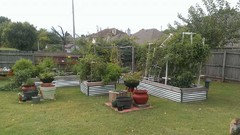



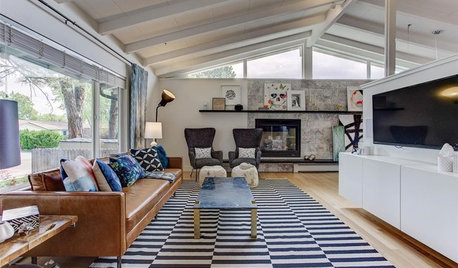


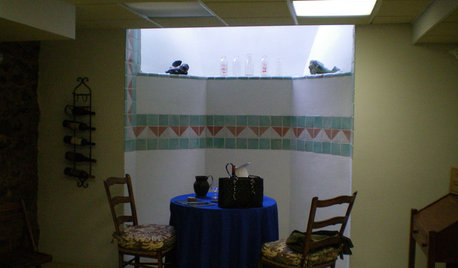

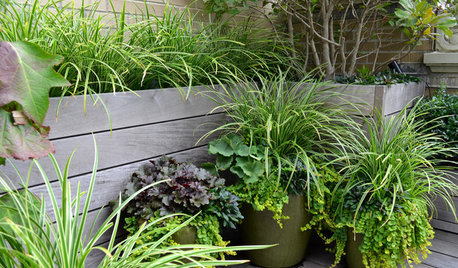
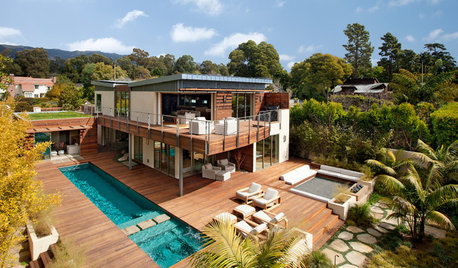







okievegan